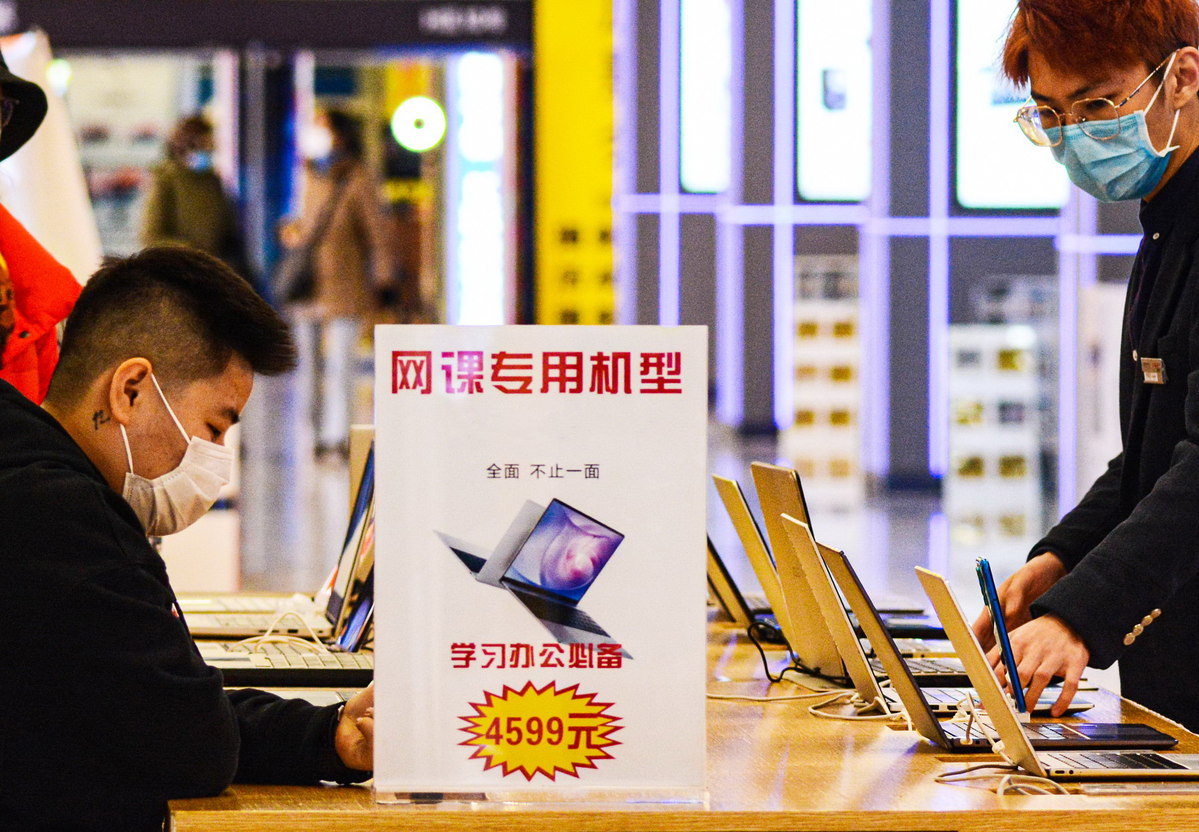Personal computers seeing second wind after COVID-19
By MA SI | China Daily | Updated: 2021-02-03 10:09

Mikako Kitagawa, research director at Gartner Inc, said that strong global consumer demand momentum is likely to continue through at least the first half of this year, but it remains to be seen if it will maintain strength in the post-pandemic era as it will depend on the permanency of the changes driving demand.
"For instance, online education may continue even after schools open, consumers may still buy groceries online and some businesses may continue full or part-time remote work. If these scenarios persist, then PCs will return to consumers' daily lives as an essential device," Kitagawa said.
Kitagawa added that prior to 2020, consumers had been shifting to a phone-first focus, but the pandemic reversed this trend. PCs have resurfaced as an essential device as consumers, including younger children, are relying on them for work, school, socializing and entertainment as they generally remain confined to their homes.
Gartner added that stable commercial PC spending due to China's economic recovery also helped drive the growth of global PC sales.
Tony Chou, vice-president of HP China, also saw big opportunities from the commercial PC segment. "The COVID-19 pandemic has accelerated digital transformation among enterprises and demand from remote working has driven sales of PCs around the world," Chou said.
"Customers realize that it is important to have PCs capable of dealing with different scenarios in life and work. Such a trend will continue in the post-pandemic era as people are now becoming increasingly accustomed to remote work," Chou said.
HP put forward the "future of work" concept in 2016, with an emphasis on being mobile, collaborative and secure as its three key features. This enabled the company to adjust its products to fit the trend of working from home at a very early stage.
More than ever, today's workforce needs the right technology and tools to stay productive as the contagion blurs the divide between life and work, Chou said.
HP has worked hard to optimize its products and solutions to meet market trends, such as PCs that can reduce background noises including slamming doors and barking dogs, thus allowing people's voices to come through loud and clear.
IDC said HP accounted for 12.2 percent of China's commercial PC market as of September 2020, a 10-year record. As of September 2020, HP accounted for 45 percent of the commercial notebook segment of large enterprise clients with more than 1,000 employees, and ranked first in the segment.
Sensing opportunities for commercial PCs, new players such as Huawei Technologies Co have also entered the sector. In December, Huawei unveiled its first commercial desktop computer for clients from government and enterprises.
Chou said: "The entry of new players showcases the big potential of the commercial PC segment. We respect new players. Meanwhile, we will focus on what customers need and accumulate industry experience so that we have broader and in-depth insights. Customer demand is the source of meaningful innovation."
But as PC shipments saw the fastest growth in a decade, supply chains are under mounting pressure to catch up with surging demand, resulting in shortages of core components.
Jitesh Ubrani, research manager for IDC's mobile device trackers, said: "Every segment of the supply chain was stretched to its limit as production once again lagged behind demand during the fourth quarter. Not only were PC makers and original device makers dealing with component and production capacity shortages, but logistics remained an issue as vendors were forced to resort to airfreight, upping costs at the expense of reducing delivery times."
Yang Yuanqing, chairman and CEO of Lenovo Group Ltd, the world's largest personal computer maker, said in an interview last year that what Lenovo lacked was not orders but supplies. In one quarter last year, Lenovo failed to produce several million computers and tablets as ordered, mainly because some parts were out of stock.
Some components were in short supply because of the industry's failure to predict the growth of PCs in 2020, and some parts' production was affected by the COVID-19 pandemic, including displays and chips, Yang said.
Now, some PC vendors are working to stock components to prepare for continued growth this year.
Tang Jiong, general manager of the China retail consumer division at Intel's sales and marketing group, said 2021 will be a good year for PC sales as they are expected to play an increasingly important role in work and lives on the back of continuous innovation.
"With strong demand from China's PC market in 2020, more and more people realize that it is very important to have a computer that can be competent for different demands of life and work. We firmly believe that in the post-contagion era, PCs will play an increasingly important role, which will lead the growth of global PC market in 2021. With continuous technological innovation, product upgrades, ecological cooperation and integration, we are optimistic about the future of the PC market," Tang said.
























